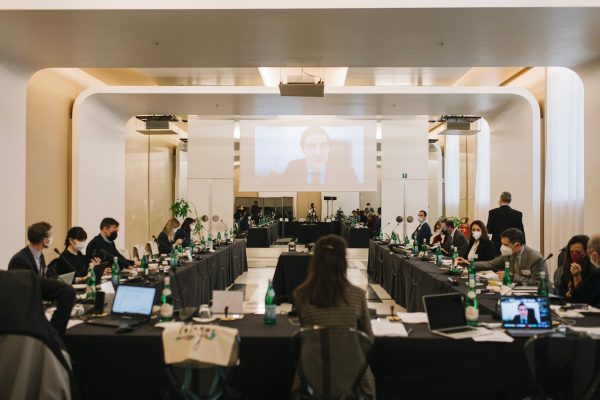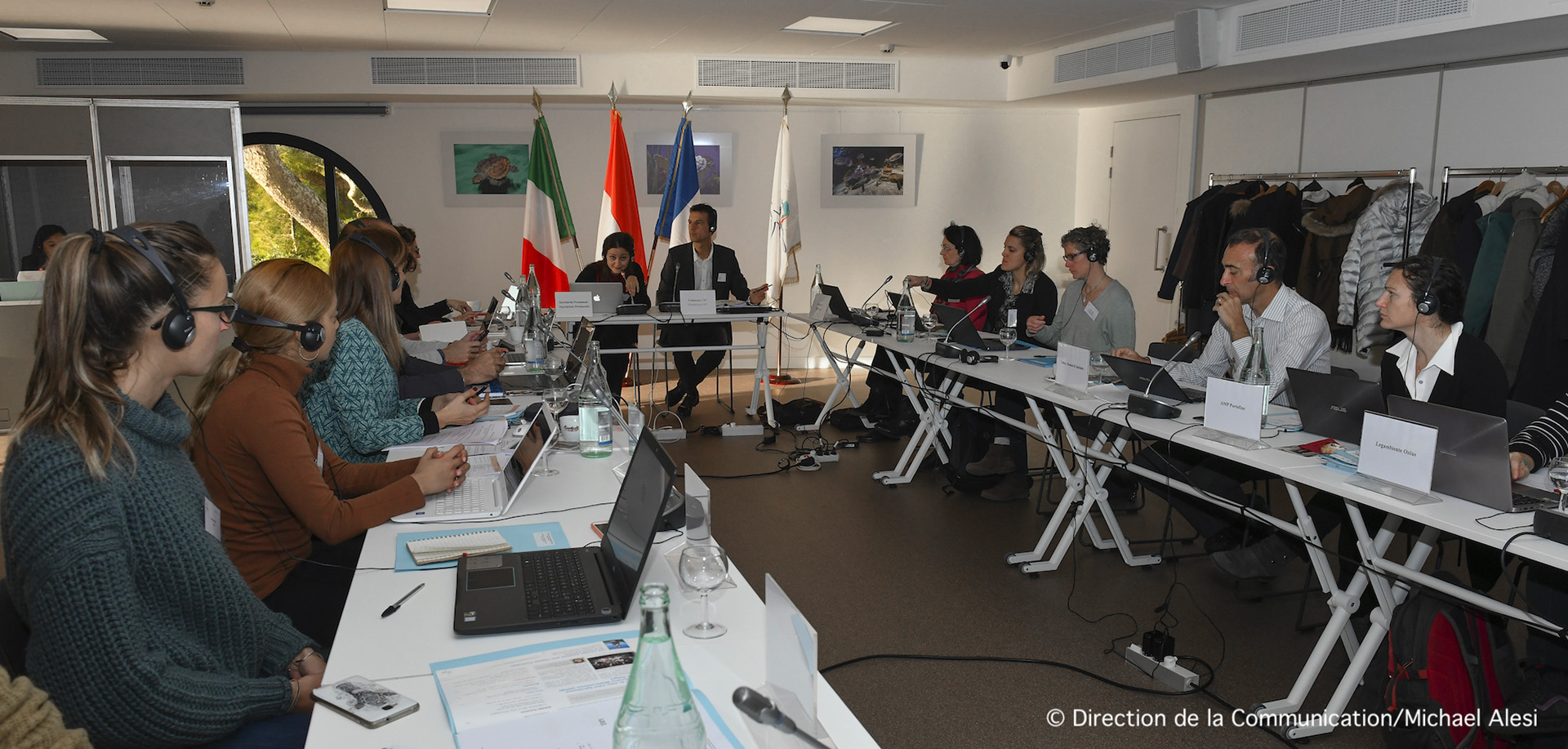The role of the Pelagos agreement
The Pelagos Sanctuary is the only international sea area dedicated to the protection of marine mammals and their habitats in the Mediterranean Sea. It was established by a Multilateral Agreement between France, Italy and Monaco signed in Rome in 1999, which came into force in 2002. Meanwhile, in 2001, the Pelagos Sanctuary was listed as a Specially Protected Area of Mediterranean Importance (SPAMI), under the Barcelona Convention.
The main role of the Pelagos Agreement is to promote harmonised actions and management measures for the protection of cetaceans and their habitats against all causes of human-induced disturbance and mortality (e.g., pollution, noise, accidental capture, injury, etc).
Beside various national legislations regulating human activities within the Sanctuary, at national level, smaller parts of the Sanctuary enjoy stricter protection via numerous Marine Protected Areas, National Parks, EU Natura 2000 Sites, and national SPAMIs.
The reason of the agreement
Documents and findings dating back centuries suggest that the abundance of marine mammals in the Mediterranean Sea is not a new phenomenon; Prince Albert I of Monaco (1885-1910) – known as the Prince of the Seas because of his great passion for ocean voyages and scientific research – reported to have seen more cetaceans from the window of his palace than from the ships he had been on.
As scientific research progressed and data were collected, the reasons for such richness in biological terms began to be uncovered and the importance of this area became quite clear.
The connection between the environment, primary production, and the presence of small and large marine creatures have been regularly studied to understand and preserve the ecosystems from urbanisation, fishing, shipping, recreational activities, etc.
The general ecological importance of the marine ecosystem in of this area has been confirmed in the 2010s by the UN Convention on Biodiversity, which identified two EBSAs (Ecologically or Biologically Important Marine Areas) fully overlapping the Pelagos Sanctuary: the North-western Mediterranean Pelagic Ecosystems and the North-western Mediterranean Benthic Ecosystems. More recently the IUCN identified two IMMAs (Important Marine Mammal Areas) in this region: the Western Ligurian Sea and Genoa Canyon IMMA (a key habitat for the Cuvier’s beaked whale) and the North West Mediterranean Sea, Slope and Canyon System IMMA (important habitat for fin and sperm whales and extending further beyond Pelagos).
The Sanctuary is one of the most productive pelagic environments in the Mediterranean Sea, but also one of those under the heaviest anthropic pressure.
In such a complex framework, the need for a structure capable of coordinating governance efforts, scientific research and outreach activities became clear.
History and success stories of the Pelagos Agreement
Many concrete conservation measures and initiatives have been taken since the institution of the Sanctuary: laws and guidelines to protect the local marine biodiversity, including the Sanctuary to the SPAMI list, research and conservation programmes, outreach and education projects, media communication activities, fundraising and much more.
TIMELINE
1980s
The problem of cetacean bycatch resulting from the use of pelagic nets came to public attention thanks to scientific research bodies and NGOs.
1986
Scientists (the Tethys Institute, universities), NGOs (SOS Grand Bleu, Greenpeace) and local elected officials speak out against driftnets and the accidental capture of cetaceans in the Corso-Ligurian Basin.
1990
The Italian government issues Decree 18/07/90, which creates a “zona di tutela biologica” [Area of Biological Protection] and prohibits Italian fishermen from using driftnets in the high seas as well as in the Italian, French and Monegasque territorial waters in the Ligurian Sea.
1990-1991
the “Tethys Research Institute” and the “European Association Rotary for the Environment”, with the participation of various other NGOs, including the WWF’s Mediterranean, draft and present the “Project Pelagos” for the establishment of a marine protected area, a Biosphere Reserve, encompassing the most important habitat for cetaceans in the region including the High Seas. The Project officially presented to the public in Monaco, in the presence of Prince Rainier III, had the support of the Rotary Clubs of Milan (Italy), Monaco and Saint Tropez (France).
1993
Signing in Brussels of a Joint Declaration for the creation of a Mediterranean Sanctuary for Marine Mammals also known as the Corsican-Liguro-Provençal Sanctuary.
1999
the Pelagos Agreement is signed in Rome by France, Italy and Monaco.
2001
The Pelagos Sanctuary becomes a SPAMI (Specially Protected Area of Mediterranean Importance), as foreseen by Article 16 of the Agreement text
2002
The Agreement enters into force with ratification laws by the three signatory Countries
2004
The First Management Plan is adopted.
2006
A Permanent Secretariat is established in Genoa (Italy).
2015
The Management Plan (2016-2022) is adopted.
2017
The Headquarter Agreement is signed between The Government of H.R.H. Prince Albert the II of Monaco, the Parties and the Permanent Secretariat of the Agreement.
2021
The New Management and Action Plan (2022-2027) is adopted.
CHART ORGANISATION
Where is the Pelagos Sanctuary ?
The Sanctuary covers an area of 87,500 sq. km and 2,022 km of coast. The area includes the coastal and pelagic waters of part of the Gulf of Lion, the whole Ligurian Sea, part of north Tyrrhenian Sea and of the Sea of Sardinia. It includes two main islands (Corsica and north Sardinia) and several minor French and Italian islands.
Its coastal areas are densely populated and the environmental pressure resulting from human activities is seasonally particularly high.
The Sanctuary encompasses 241 municipalities: 129 in France, 111 in Italy and one in Monaco.
Photos credits :
©Hélène Labach – MIRACETI
©M. Costa – Tethys
©Vincent Jacques – Drone de Regard




